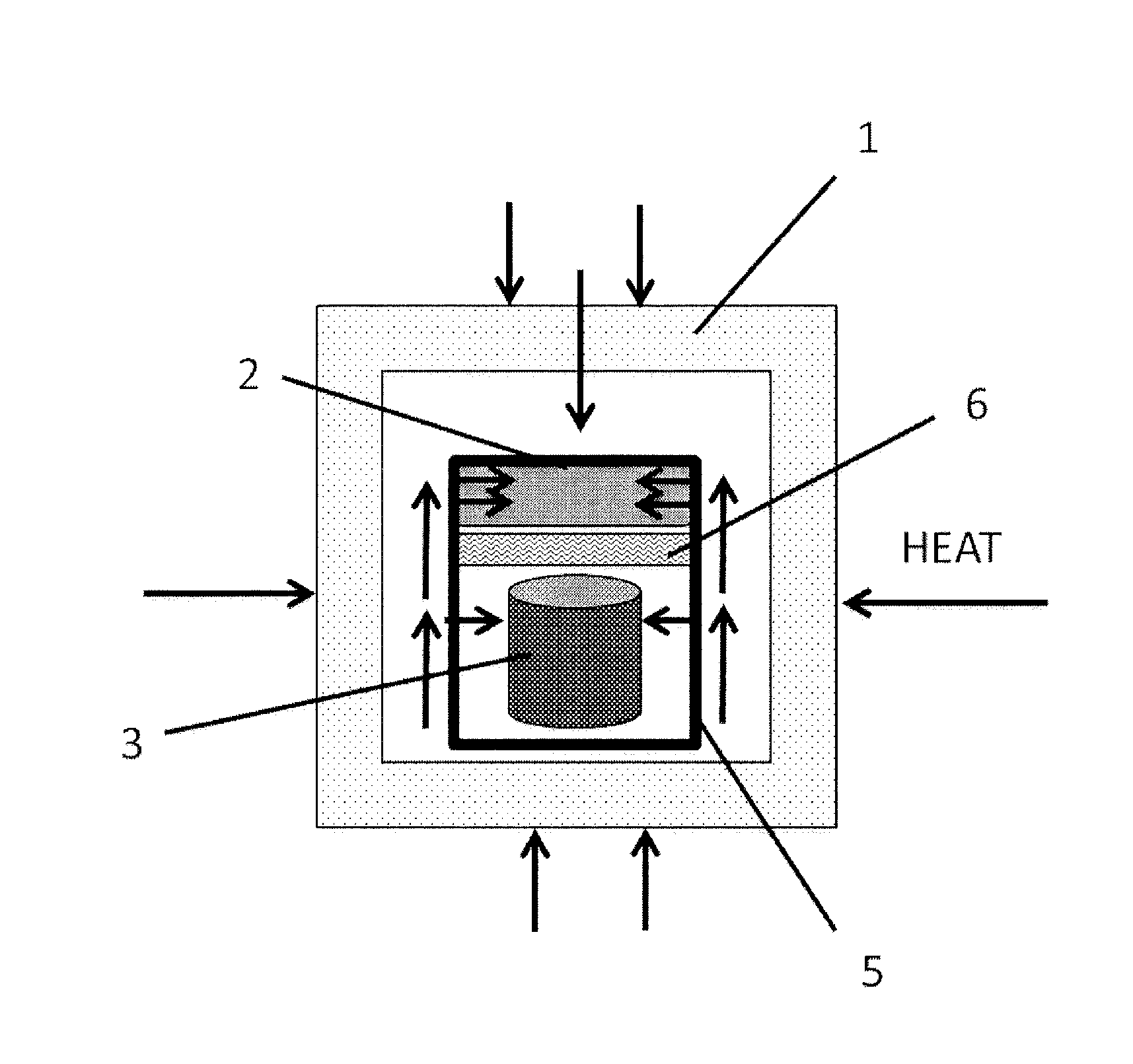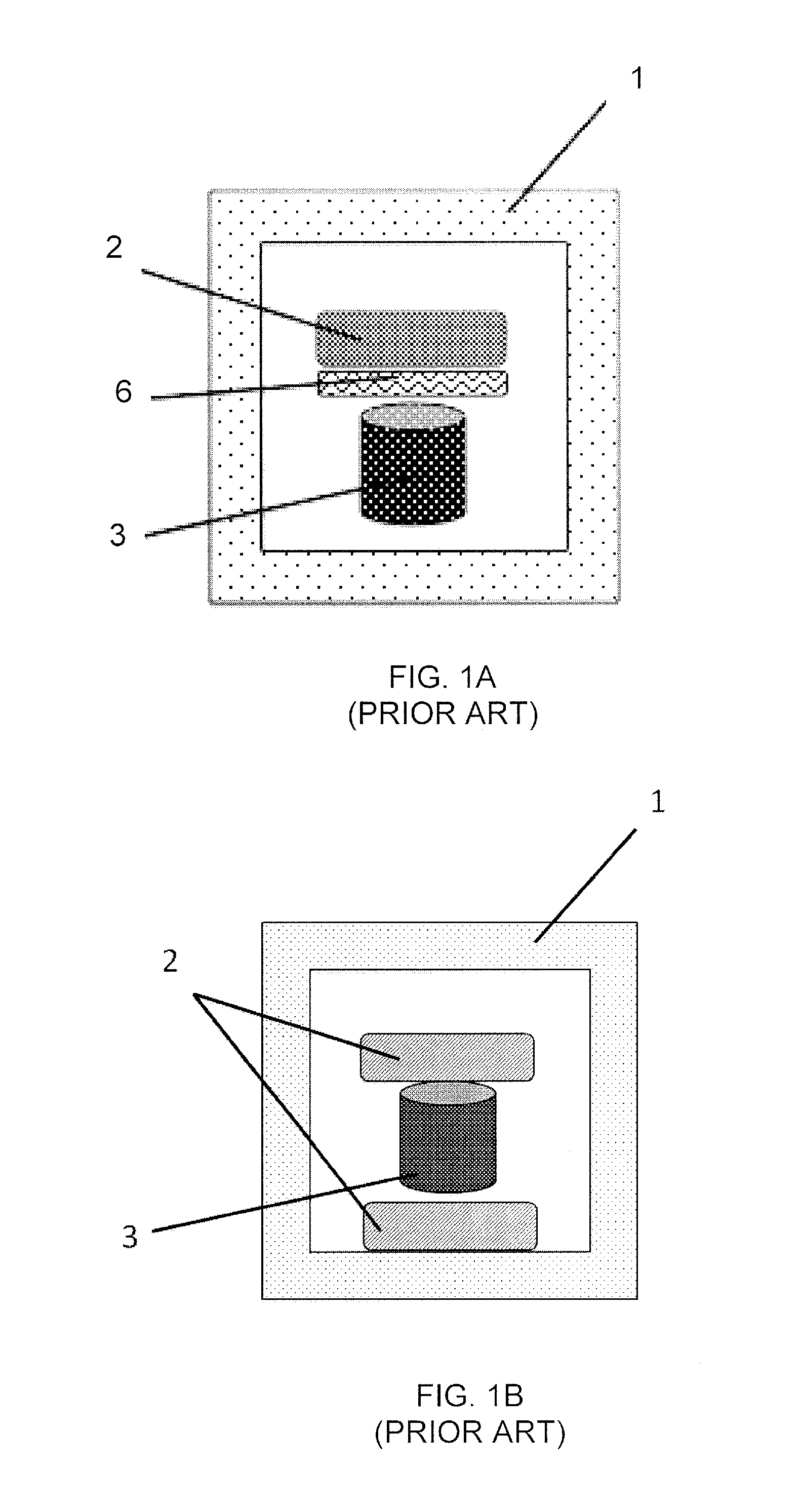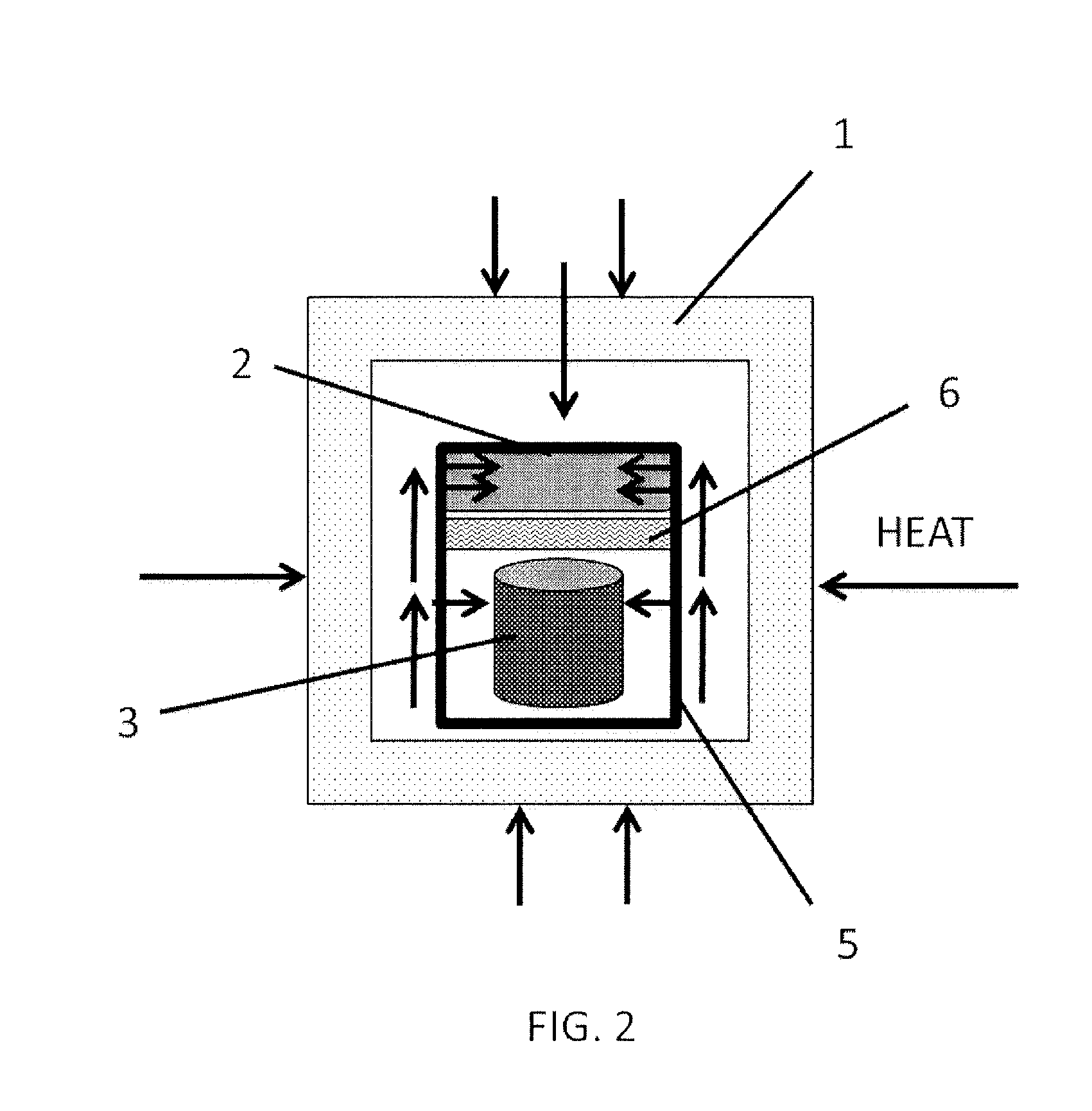Method and Apparatus for Thermally Protecting and/or Transporting Temperature Sensitive Products
a technology for transporting temperature sensitive products and controlling the thermal environment of payloads, which is applied in the direction of domestic cooling apparatus, lighting and heating apparatus, packaging, etc., can solve the problems of if effective at all, and reducing the effect of natural convection
- Summary
- Abstract
- Description
- Claims
- Application Information
AI Technical Summary
Benefits of technology
Problems solved by technology
Method used
Image
Examples
example 1
Optimizing the Use of the Cold Bank
[0064]A 0.028 m3, 25.4 mm thick EPS container with a 0.68 kg ice pack conditioned at −20° C. was used for this test. Three insulated packaging systems were tested using the regular configuration against an embodiment of the invention that involves wrapping the payload and the cold bank (two 10 ml vials, one 0.68 kg ice pack at the top) with an aluminum conductive equalizer sheet of a thickness of 0.016 mm that covered 100% of the surface area of the payload and one with an aluminum conductive equalizer sheet with a thickness of 0.016 mm that covered 30% of the surface area of the payload. Reducing the surface area can also play an important role in the thermal efficiency of the conductive material covering system. As it can be seen in Table 4 below, a conventional insulated container using a cold bank at the top can be improved by using a 30% total surface aluminum conductive equalizer sheet but be further optimized with a more significant gain by...
example 2
Reducing the Temperature Differences Inside the Load
[0066]Insulated container: EPS 38 mm wall with outside dimensions 292 mm×228 mm×336 mm
Load: 127 mm×178 mm×203 mm (with 7 prefilled syringes (2 ml each) and 4 vials (5 ml each)) conditioned at 24° C.
Cold bank: 0.45 kg ice pack (2) conditioned at −20° C. placed on the top
Conductive equalizer system: 127 mm×178 mm×203 mm (outside layer like a box)
Conductive equalizer materials:
[0067]A. LDPE film 0.05 mm thickness (thermal conductivity: 0.33 W / (m-K)
[0068]B. Mylar reflective film 0.05 mm thickness (thermal conductivity: 0.15 W / (m-K)
[0069]C. Aluminum sheet 0.016 mm thickness (thermal conductivity: 205 W / (m-K)
[0070]D. Aluminum sheet 0.3 mm thickness (thermal conductivity: 205 W / (m-K)
[0071]E. Steel sheet 0.3 mm thickness (thermal conductivity: 43 W / (m-K)
[0072]F. Copper sheet 0.3 mm thickness (thermal conductivity: 401 W / (m-K)
Filling material in free space: bubble wrap LDPE (FIG. 8)
Results:
[0073]
Temperature (° C.) at locations 1 and 2 after...
example 3
Reducing the Temperature Differences Inside the Load
[0076]Insulated container: EPS 25.4 mm wall with outside dimensions 203 mm×203 mm×203 mm
Load: 152 mm×152 mm×76 mm (4 vials (5 ml each)) conditioned at 24° C.
Cold bank: 0.45 kg ice pack conditioned at −20° C. placed on the top
Conductive equalizer system: 152 mm×152 mm×76 mm (outside layer like a box) Conductive equalizer materials:
[0077]A. LDPE film 0.05 mm thickness (thermal conductivity: 0.33 W / (m·K)
[0078]B. Aluminum sheet 0.3 mm thickness (thermal conductivity: 205 W / (m·K)
[0079]C. Copper sheet 0.3 mm thickness (thermal conductivity: 401 W / (m·K)
Filling material in free space: bubble wrap LDPE (FIG. 9)
Results:
[0080]
Temperature (° C.) at locations 1 and 2 after 12 hours when exposed to 24° C.Conductive Temperature equalizer typelocation 1location 2differenceA6.310.54.2B7.110.02.9C6.49.92.5
[0081]In a specific embodiment, the cold bank is at least 70 mm away from the furthest point in the payload. In further embodiments, the cold bank...
PUM
 Login to View More
Login to View More Abstract
Description
Claims
Application Information
 Login to View More
Login to View More - R&D
- Intellectual Property
- Life Sciences
- Materials
- Tech Scout
- Unparalleled Data Quality
- Higher Quality Content
- 60% Fewer Hallucinations
Browse by: Latest US Patents, China's latest patents, Technical Efficacy Thesaurus, Application Domain, Technology Topic, Popular Technical Reports.
© 2025 PatSnap. All rights reserved.Legal|Privacy policy|Modern Slavery Act Transparency Statement|Sitemap|About US| Contact US: help@patsnap.com



